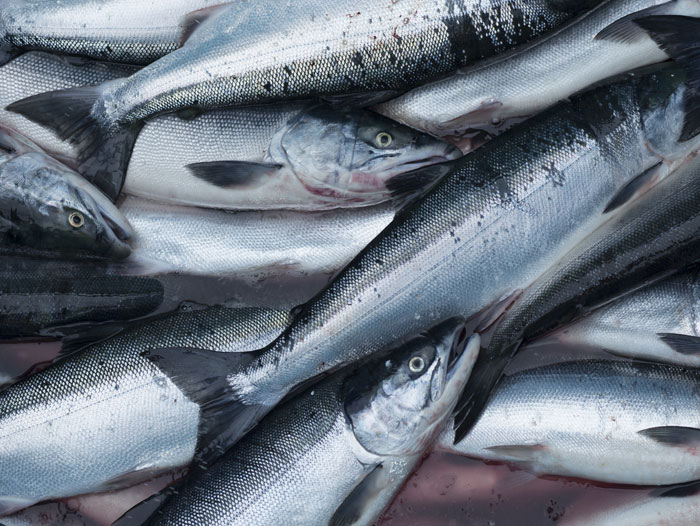In One Place, For One Fish, Climate Change May be a Boon
October 7, 2021 | 3 min to read

On a mid-july afternoon, when the tide was starting to come in on the Naknek River, the Bandle family’s commercial fishing nets lay stretched across the beach, waiting for the water to rise. With the fishing crew on break, Sharon Bandle emerged from a tar-paper-sided cabin that serves as kitchen and bunkhouse with a plate of tempura salmon and a bowl of cocktail sauce. Everyone dug in.
Here in southwestern Alaska’s Bristol Bay, the Bandle family has fished by setnet for nearly 40 years, anchoring nets hundreds of feet long on the beach, then stretching them perpendicularly into the river’s current. The webbing hangs like a curtain from a line of softball-size corks, intercepting sockeye salmon as they swim upstream to their spawning grounds. Crews of two or three in small aluminum skiffs pick the salmon from the nets; processing plants on the far side of the river head and gut the catch, then ship the bulk of it to China and elsewhere for additional processing.
Bristol Bay’s sockeye harvest has long made up about half of the global catch of this species, in a seasonal blitz as short as it is enormous: The fishery lasts a mere six weeks. Each summer, 15,000 seafood processors, boat-based fishermen, and setnetters—including families such as the Bandles—gather here to support an industry worth more than $2 billion in 2019. Some fishermen will net enough cash to live on until the fish come back the next year. And this year, Bristol Bay outdid itself, notching the largest sockeye run in the region’s recorded history with an astonishing 66 million returning fish. Even more astonishing, this season capped nearly a decade of extraordinarily high salmon returns in Bristol Bay, where sockeye harvests have reached more than 50 percent above the most recent 20-year average.
To read the rest of the story, please go to: The Atlantic
